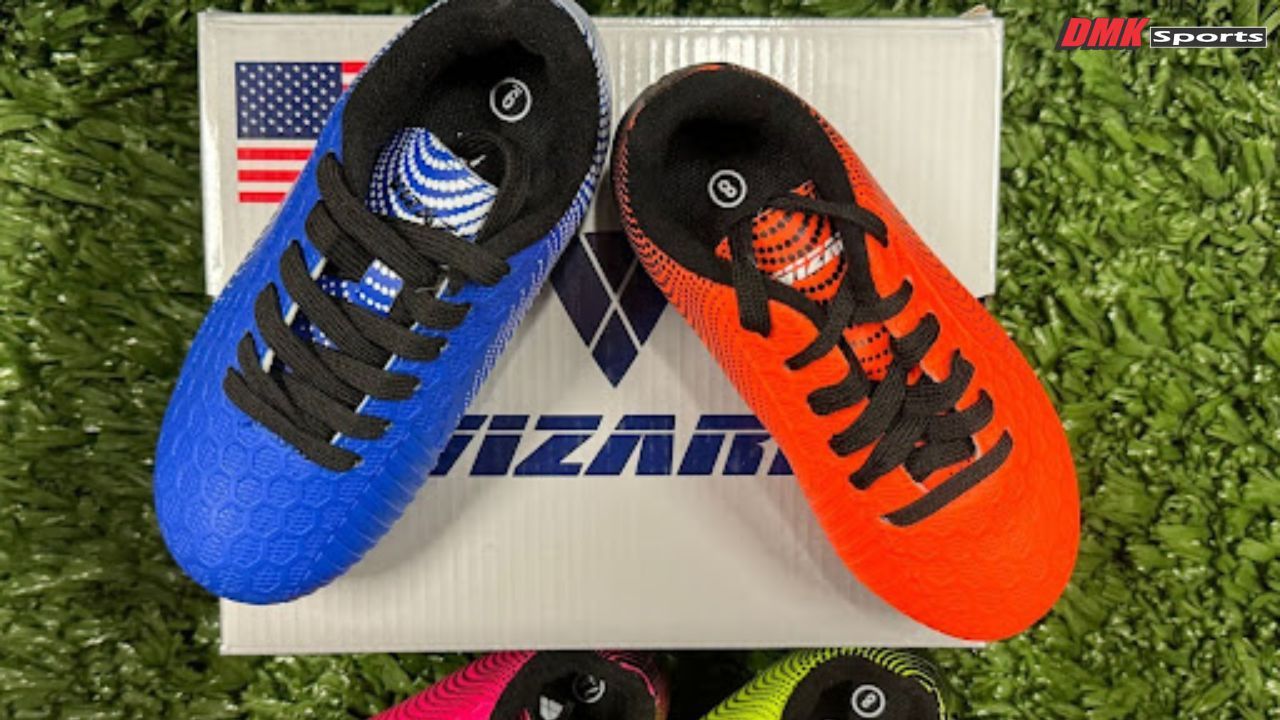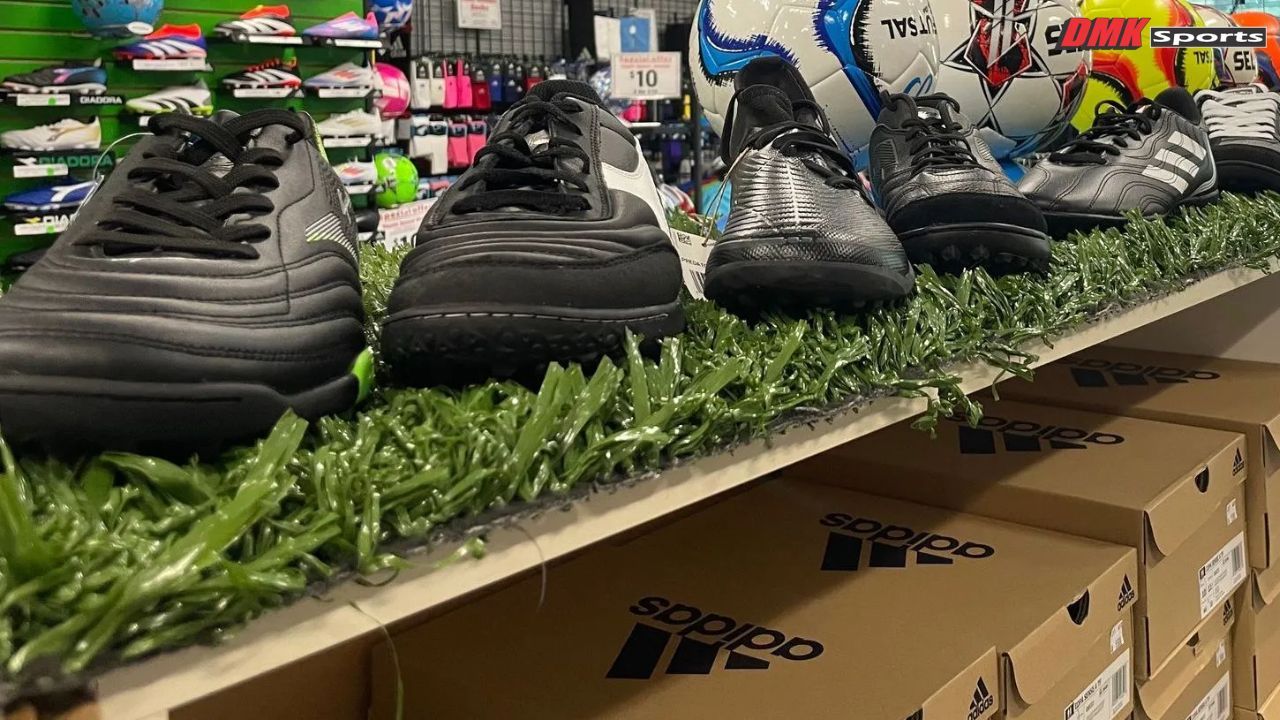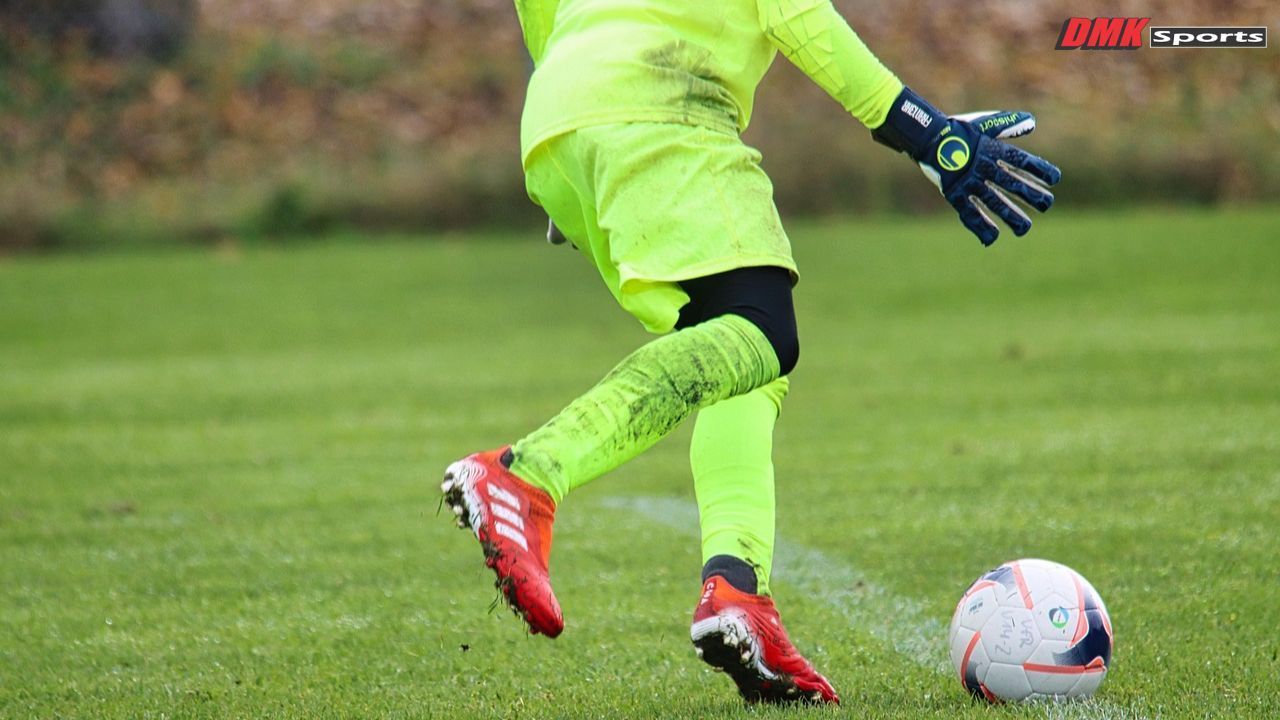Leather vs. Synthetic Soccer Cleats: Which Material is Right for You?

Soccer is a physically demanding sport. Your gear can either enhance your performance or hold you back. Cleats are a vital item for every player. Two common cleat materials are synthetic and leather. But how to choose between them?
A comparison of leather vs synthetic soccer cleats will tell you everything you need to know for an informed decision. Once you have a good understanding, shop high-quality, performance-driven cleats from DMK Sports.
Let’s begin.
What Are Leather Soccer Cleats?
Leather soccer cleats are made from leather, a natural product. These cleats have distinct properties. It is because leather stretches with time due to heat. This natural stretch is beneficial for players as they shape themselves to their feet. Thus, a unique and comfortable fit is created.
Leather comes from different animals. The two popular ones are kangaroos and cows. The difference between
kangaroo leather vs. synthetic
is that the former offers a more premium feel. Leather cleats are more padded. They offer a naturally softer sensation.
What Are Synthetic Soccer Cleats?
Synthetic soccer cleats are created out of man-made material. They can be knitted or plastic material. A main difference between leather vs synthetic soccer cleats is that synthetic boots are less expensive. They are thinner and lighter. Thus, they are easy to maintain over the years.
Synthetic cleats can be thin, thick, or padded. It all depends on what the manufacturer has designed it for. Recently, synthetic cleats have seen a new trend. They are made out of knitted fabrics and coated with protective layers. This created a sock-like feel. At the same time, the exposed knit is protected from wear since it's covered.
Buyer Point
When choosing between leather or synthetic cleats, there are certain points to be kept in mind.
- Synthetics are not designed to stretch like leather. Some elasticated synthetics can stretch with force. But they soon come back to their earlier shape.
- A thinner synthetic knit feels soft on foot. Contrarily, a padded synthetic feels leather-like.
- Leather cleats provide a natural feel, while synthetic cleats are lighter and more consistent in size and shape.
Synthetics, being water-resistant are more suited for long-term use compared to leather.
Kangaroo Leather vs Synthetic: Detailed Comparison
When considering kangaroo leather vs synthetic, it is important to evaluate playing style, comfort needs, and field conditions.
- Performance: Leather boots offer top-notch performance. They shine when it comes to comfort and ball touch. Synthetic cleats are better for enhancing speed.
- Comfort: A great comfort factor of leather boots is that they shape themselves to your foot. This offers a very cozy feel. Synthetic boot’s comfort comes from the fact that they are very lightweight.
- Durability: Synthetic cleats resist water and stretching, but leather requires
careful attention to prevent cracking or deterioration.
- Cost: Leather cleats are typically more expensive because of
material quality and craftsmanship, while synthetics are
affordable for most players.
- Weather Conditions: Synthetic cleats perform well in all weather, while
leather absorbs water, potentially increasing weight and reducing performance.
Player Type: Professionals often prefer leather for match play, while synthetic cleats suit youth, weekend players, or multi-field use.
Choosing Leather or Synthetic Cleats for Your Playing Style

Your position, speed, and preferred field type play a major role in choosing the right cleats.
- Strikers and Midfielders: Leather cleats help players who focus on
technical control, precise passing, and shooting accuracy.
- Wingers and Speed Players: Synthetic cleats are ideal for those who need
lighter footwear for quick sprints and agile footwork.
- All-Weather Players: Synthetic cleats are
resistant to rain, mud, and wet turf, maintaining performance in challenging conditions.
- Youth and Casual Players: Synthetics provide
affordable, durable, and low-maintenance options for growing feet.
Choosing the right cleat depends on
balance between comfort, weight, and ball feel. Each player may prioritize
touch, speed, or durability differently, making personal testing important.
Wash and Care Guidelines for Cleats
Daily Upkeep
You want your cleats to give you the best performance. So, it is vital to keep them free of mud or dirt. Use an object like a stick to take off excess mud between the studs. Ensure to do this after every use.
Washing and Cleaning
Use a mild detergent and warm water to remove stains. Take it off with a towel or a sponge. Never use aggressive household cleaners on your cleats. They will make them dry and crack. Also, do not submerge the cleats in water during the washing process.
Drying
Allow the cleats to dry naturally. Use a fan for this purpose. Another option is to stuff heavily soaked cleats with newspaper. This will maintain their fit and shape.
Cost Comparison Between Leather and Synthetic Cleats
A comparison between leather vs synthetic soccer cleats cannot be complete without costs. This comparison is quite straightforward. Leather cleats are more expensive than synthetics. However, they also last for a longer time. Not only that, but they also age beautifully. It means that over the course of your lifetime, you’ll need to buy fewer pairs. So, it makes leather cleats a good long term investment.
Synthetic cleats are cheaper. This makes them suited for those who like switching styles often. Remember that synthetics are not as long-lasting as leather. So, you might need to buy them more frequently.
Choosing Between Leather vs. Synthetic Soccer Cleats
Picking one out of the two isn’t a fluid task. This is because both types of cleats come with their own pros and cons. On top of that, there are multiple varieties for each cleat.
But now you know much more about the two major types. Consider your needs and preferences while choosing among them. If you need more guidance, visit DMK Sports. The family-owned and operated store offers a great blend of service, selection and value. Rest assured, you’ll end up picking up the perfect pair of cleats for yourself.
FAQs
1. Are leather cleats better than synthetic cleats?
Leather cleats offer
better ball control and comfort, while synthetic cleats provide
lightweight and durable options for casual players.
2. How do I know which cleats are right for my position?
Strikers often prefer
leather cleats for touch, while wingers benefit from
lightweight synthetic cleats for speed.
3. Can synthetic cleats replace leather cleats for professional play?
Synthetic cleats are suitable for training and casual matches, but
professional players usually choose leather for match performance.
4. How should I care for leather soccer cleats?
Leather cleats require
regular cleaning, drying, and conditioning to maintain flexibility and durability over time.
5. Are synthetic cleats waterproof?
Most synthetic cleats
resist water better than leather, making them ideal for wet and muddy fields.










